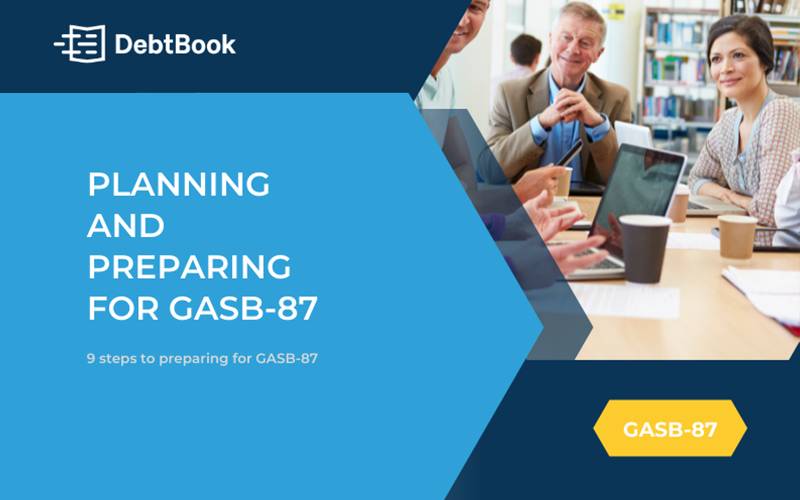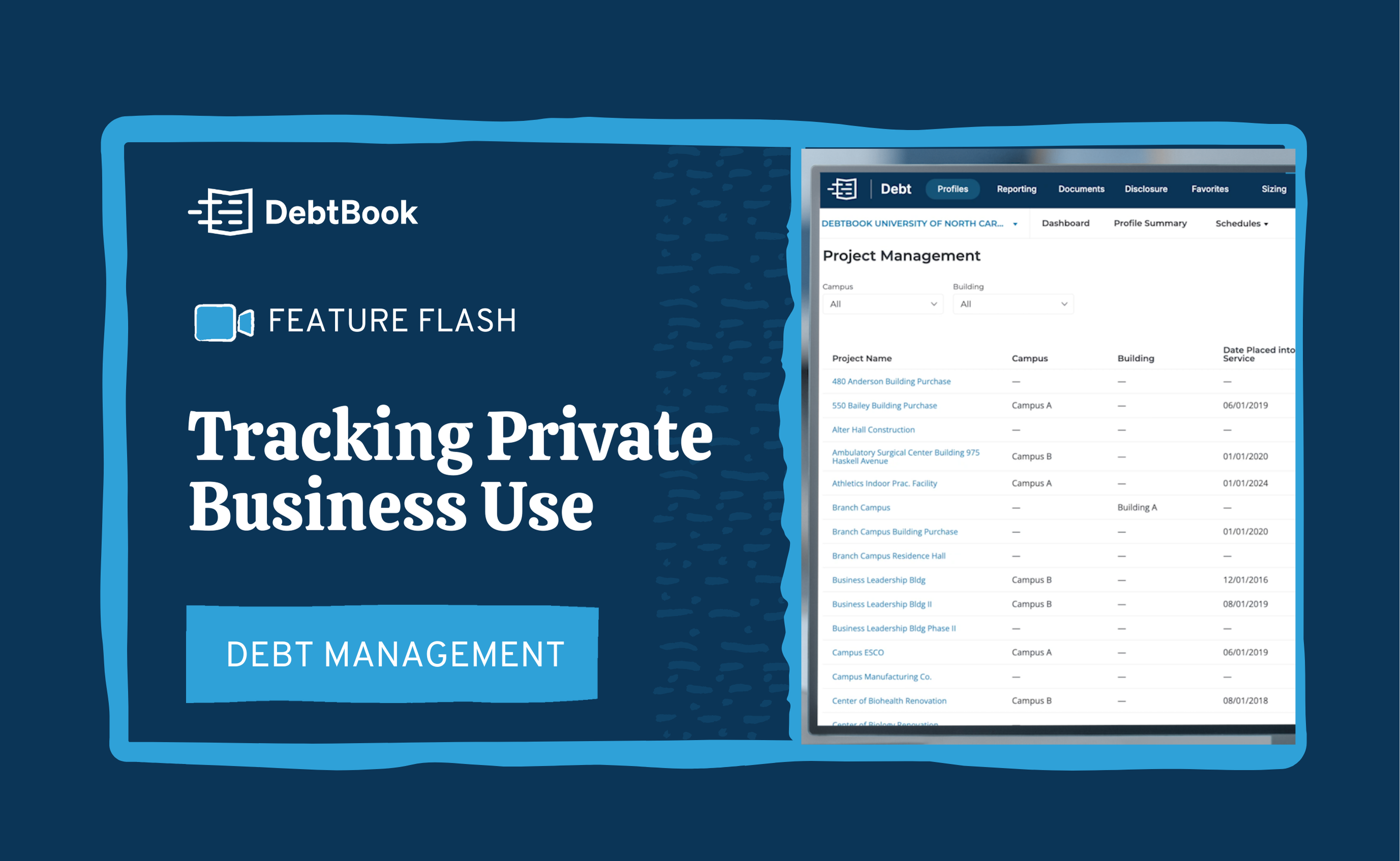Are you ready for GASB 87?
If the answer to that question is “no,” not to worry. The Governmental Accounting Standards Board (“GASB”) postponed the effective date of GASB 87 to reporting periods starting after June 15, 2021, meaning entities with a June 30, 2021 fiscal year-end will be the first to implement for their fiscal year 2022.
GASB 87 requires Leases to be reported on the face of the financial statements and eliminates the classification of operating and capital leases. It means more work to be done for finance teams that are already understaffed throughout the country.
We’ve assembled this guide to break down the preparation process into bite-sized pieces for you and your team.
Step One: Creating Your Implementation Roadmap
Step Two: Collecting and Organizing Leases
Step Three: Extracting the Data
Step Four: Crafting the Initial Schedules
Step Five: Launching the Internal Review Process
Step Six: Understanding the Importance of Journal Entries
Step Seven: Starting the External Review Process
Step Eight: Preparing Note Disclosures
Step Nine: Adhering to Ongoing Compliance
.png?width=620&name=6157134569a260f880b1e0a2_BLOG%20BANNER%20-%20GASB87%20(1).png)
Step One: Creating Your Implementation Roadmap
The first step to preparing for GASB 87 is creating your implementation roadmap, starting with the necessary steps to get started in time to meet the compliance deadline. This will allow teams to fully understand the new requirements and determine who will be primarily responsible for each step of the process, as well as establishing a realistic timeline.
We created this simple roadmap to help you get started.
Step Two: Collecting and Organizing Leases
You’ve got your roadmap, now we need to get our arms around our universe of leases. We can think about our universe of leases in three parts:
- Known capital leases (you’re the lessee)
- Known operating leases (you could be the lessee or lessor)
- Everything else
Let’s look at the first two categories above – and these should be relatively easy to locate – you likely have your capital lease and operating lease contracts stored locally for use in prior audits. Create separate folders for the first two categories and move a copy of the capital lease and operating lease agreements there. If you’re having trouble finding these, remember that you would have provided these contracts to your outside auditor for use in previous audits, so you likely organized them locally at some point – someone has them. It’s even possible that your auditor still has a copy of some or all – no guarantee – but you can reach out to them and give that a shot.
You’ll want to make sure that you’ve reviewed any contracts executed since your last audit – checking with your legal department is a great place to start for assistance with finding new capital or operating leases. This is the same work you would have done pre-GASB 87 – someone on your team should be able to tell you how they checked for these leases in prior audits – you likely have a process in place.
Once we have our capital and operating leases from the previous audits plus any new leases we entered into, now we need to find everything else – time to make our third folder and move a copy of these contracts here for review.
This part is tricky, obviously. Let’s break it down:
- Does the contract convey control of the right to use an asset? You can determine the answer by asking yourself:
a. Do I get all of the current benefits from a physical asset mentioned in the contract?
b. Do I get to control how that asset is used? - Is the same, or similar, value exchanged between the lessee and the lessor?
For example, we have a Data Hosting Agreement that includes website access, data storage and application updates. The contract states that the data is stored on a server that is used exclusively for our data (we are getting the current benefits of an asset - the server) and we can tell the vendor how we want the server to be used during the contract period (we get to control how the asset - the server - is being used). The contract term is for 60 months with payments of $500 per month (similar value is exchanged). This is called an embedded lease (more on embedded leases here), which qualifies as a Lease under GASB 87.
Now ask yourself the same questions from the opposite side – are you the lessor on any agreements where:
- The lessee gets control of the right to use an asset?
- The lessee gets all of the current benefits from an asset?
- The lessee can control how the asset is used?
- The same, or similar, value is being exchanged?
For example, we are a county that provides a bus service to the local university under a service agreement. Per the agreement, the university pays $1,000 (similar value is exchanged) to have two buses transport students across campus based on a schedule that the university determines (the university gets to control how the assets - buses - are being used). The buses used for the university campus are required to have university lettering and messages on them (the university gets the current benefits of specific assets - the buses). This qualifies as a Lease under GASB 87.
If you’re in doubt, make a copy and move the contract into your “everything else” folder. You can always remove or recategorize it later – this is a good opportunity to ask for another team member or third party to take a look and help.
Now that we have our universe of contracts in one centralized space, it’s time to review the contracts in each of the three folders and classify them into our three new categories:
- Debt
- Leases
- Expenses
Let’s start with the capital leases folder.
Most capital leases will fall into the Debt or Leases category under GASB 87. Capital leases that were classified as capital leases under the old standard because they transferred ownership by the end of the lease, now go into the Debt category to be treated as installment purchase agreements.
Capital leases that do not transfer ownership by the end of the contract, or transfer ownership but contain termination options, will go into the Lease category. These will need to be reviewed in light of the requirements of GASB 87 to ensure any changes in the liability or asset are included in the restatement journal entry.
Next, the operating lease folder.
Most operating leases will fall into the Leases or Expenses category under GASB 87. The Expenses category consists of leases with a maximum lease term of 12 months including all renewal options, even if you do not expect to exercise them. Any operating leases that are not in the Expense category will fall into the Lease category.
Now for the final folder of contracts. The number of contracts in this folder will guide your approach here. If you have less than 15, you should be able to make relatively quick work of the task. Anything more, and many DebtBook customers have hundreds, it might be time to look into how others can leverage their teams and technology to help you at a low cost.
If you’re going to process the contracts yourself, start by separating all of the contracts in which you are the lessor. If the identified contracts have a maximum lease term (including renewal options, even if you do not expect to exercise them) of 12 months or less, they will go in the Expense category. If the contracts transfer ownership by the end of the lease and do not contain termination options, they will go in the Debt category. Everything else goes in the Lease category.
The remaining contracts will be assessed to determine if they are embedded leases. Here is how we suggest you start:
- Look for mention of a physical asset. It could be implied in the contract rather than explicitly stated.
- Then look for words like “exclusive use” or “designated.” This could indicate you have control and obtain all of the benefits from the underlying asset.
- Service agreements. Shuttle agreements, IT service agreements, janitorial service agreements and cafeteria service agreements are great places to search.
You can learn more in our post about embedded leases.
Tip: Use a cloud based file share (dropbox.com or box.com as an example) to sort your documents in the cloud – this will allow you to easily share access with your team and third parties. When you reorganize, make a copy rather than moving the entire file – this will give you a before and after picture when you double check later.
Step Three: Extracting the Data
So, we’ve organized our universe of contracts and re-categorized them based on the new standard.
Anything that has moved into our Debt folder needs to be treated as debt, since it is the equivalent of an installment purchase agreement.
Anything that has moved into our Expense folder can be left alone – nothing to do there except expense the payments as they are made, but let’s make sure to have another team member or our external auditors review those agreements to make sure we classified those appropriately.
That leaves our Leases folder.
There are three key data extraction categories for leases under GASB 87:
- Lease term
- Lease liability (lessee) or receivable (lessor)
- Lease asset (lessee) or deferred inflow of resources (lessor)
The lease term needs to include (a) any renewal options available to the lessee or the lessor where it is reasonably certain that the lessee or lessor will exercise, (b) any termination options available to the lessee or lessor where it is reasonably certain that the lessee or lessor will exercise, and (c) any fiscal funding or cancellation clauses where it is reasonably certain that the lessee will exercise.
From there, gather all of the payment data including fixed payments, variable payments based on an index or rate, variable payments that are fixed in substance, residual value guarantees, purchase options, incentives or prepayments made after the commencement date, deposits, and other payments that are reasonably certain of being required. These details will be included in the liability calculation (lessee) or receivable (lessor) calculation.
Lastly, identify any initial direct costs and any incentives or prepayments that were made at or before the commencement date. The lease asset (lessee) or deferred inflow of resources (lessor) will start with the lease liability calculation balance and then get adjusted based on these pieces of data. Download examples for GASB 87 Lessee and GASB 87 Lessor.
Tip:
Invite all lease stakeholders to the data extraction process. They know their leases better than anyone and they will be able to help identify information that may get missed otherwise.
Step Four: Crafting the Initial Schedules
While populating the schedules isn’t inherently complex, it’s crucial to make sure that all data is correctly input into a centralized location so all lease asset, lease liability, lease receivable and deferred inflow of resources balances are correctly presented in the financial statements. Download examples for GASB 87 Lessee and GASB 87 Lessor.
Tip:
Pay particular attention to variable lease payments that include minimums. The minimum amounts are considered fixed in substance and have to be included in the calculation of the lease liability or lease receivable. Be sure to also address any purchase options and terminations in the lease agreement as these will impact your lease term and the associated schedules.
Consider materiality when processing your leases, but keep in mind, materiality is based on the overall effect of the lease balances on the financial statements as a whole, not on individual lease balances.
Example: Your materiality level is $5,000. You have 3 copier leases with $300 payments for 18 months each discounted using an interest rate of 10%. Individually, the present value of their lease payments (aka their liability balances) are $4,995.25, below materiality. In aggregate, the liability for the 3 leases is $14,985.74, above materiality and should be reported in the financial statements.
The lease payments should be discounted using the interest rate charged by the lessor, which may be the interest rate implicit in the lease. Many of your leases will not have a stated interest rate, or the information available to calculate the rate implicit in the lease. In those cases, GASB 87 requires the use of an estimate of the interest rate that would be charged for borrowing the lease payment amounts during the lease term, also known as your incremental borrowing rate.
Step Five: Launching the Internal Review Process
It’s time to start reviewing our work, first on an internal basis. The initial review of the schedules should be laid out fairly early on in the process so those responsible have more than enough time to conduct a comprehensive review of each step of the process. Remember, all lease details must be added or corrected before moving on to the next step to avoid having incomplete lease schedules.
Tip:
Ask yourself early on if your organization has time to commit to multiple review stages, or if you need assistance with this step. Working with a CPA or specialist who offers expert assistance and resources can significantly improve this process for you and your team.
Step Six: Understanding the Importance of Journal Entries
Once you have completed the initial internal review, it’s time to move on to addressing journal entries. While not as complex as some of the other steps, the journal entries are the mechanism for assuring the financial statements comply with GASB 87. A restatement entry is required for any prior periods that are being presented. Keep in mind, as with any journal entries related to a new standard, these journal entries are highly susceptible to auditor scrutiny, so don’t hesitate to reach out for additional review or help with these entries. You can download examples for GASB 87 Lessee and GASB 87 Lessor.
Tip:
For purposes of restatement, operating leases are primarily being considered, but be sure to include capital leases, as well. Capital leases may have a different classification, or updated asset and liability balances based on their terms, so they may require adjustments as well.
Step Seven: Starting the External Review Process
Now, it’s time for an outside opinion. Having an outside advisor take a look at this stage will help identify any areas that may have been missed or provide helpful guidance that was not initially considered.
Tip:
It’s always better to be prepared. Find an advisor early on in the process so you can determine what level of involvement you may need from them, as well as their associated fees.
Step Eight: Preparing Note Disclosures
As you near the end of this compliance process, another crucial step will be carefully reviewing and preparing disclosures. While many of the disclosures remain similar to what was previously required, they will be more robust than before. For example, outflows of resources for variable payments, termination penalties and other payments not previously included in the lease liability (lessee) or lease receivable (lessor) will need to be disclosed.
Tip:
Split up right-of-use assets to show balances separately from regular capital assets.
Step Nine: Adhering to Ongoing Compliance
Preparing and implementing a framework for compliance with GASB 87 is a complex undertaking, so it’s important to set your organization up for success from the start by carefully reviewing every contract, agreement, and lease and organizing them in a sustainable system.
The first year will be the most challenging, but once all information has been properly input into a centralized location, your team will have developed the framework for compliance with not just GASB 87, but all future pronouncements. This will also help the organization to avoid future issues with auditing or handling complex contracts going forward.
Be sure to continue carefully documenting as you go, creating a comprehensive record outlining the phases and processes that were utilized when developing this framework. This will guide future plans to develop formal policies, and outline what the review procedures look like from start to finish.
In the end, it’s imperative that your organization does not wait until the last minute to document who the responsible parties were, how certain tasks were completed, or when compliance must be observed. Make this a step of the process and watch as everything begins to fall into place.
Shameless plug time: Software can be very helpful with implementation and ongoing compliance, so reach out to us if you’re interested in learning more.
Disclaimer: DebtBook does not provide professional services or advice. DebtBook has prepared these materials for general informational and educational purposes, which means we have not tailored the information to your specific circumstances. Please consult your professional advisors before taking action based on any information in these materials. Any use of this information is solely at your own risk.







